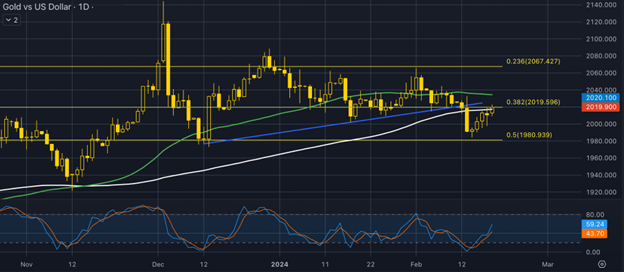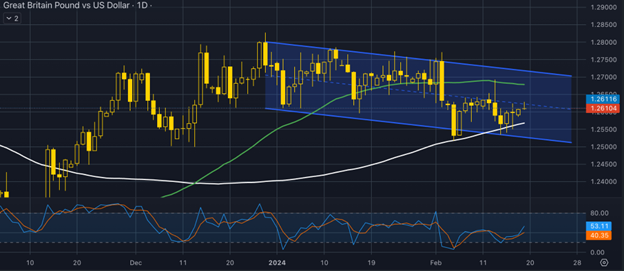This preview of weekly data looks at XAUUSD and GBPUSD, where economic data coming later this week are the main market drivers for the near short-term outlook.
Weekly data: Gold and GBPUSD. What’s the short-term outlook?

The most important economic data for this week:
Tuesday:
- RBA meeting minutes at 12:30 AM GMT are anticipated by the market participants to give a glimpse of the short-term action plan of the Reserve Bank of Australia. More dovish commenting might be seen as a weakness of the Aussie Dollar, creating some minor push on the price to the downside and vice versa.
- Canadian Inflation rate at 13:30 GMT. The anticipation here is for a decline of around 0.2%, reaching the figure of 3.2%. If this anticipation becomes a reality, then the loonie might see short-term losses against its pairs.
- Japanese Balance of trade at 11:50 PM GMT, where the expectations are for a decline in the figure from ¥62.1 billion to ¥-1,925.9 billion for January. If the expectations are correct, the yen could face some pressure against the currencies traded against it.
Wednesday:
- FOMC Minutes at 19:00 GMT, where investors and traders will be paying close attention to any hints from the Federal Reserve regarding future developments on monetary policy. Currently, the possibilities of a rate cut have been pushed back to the June meeting, according to the Fedwatch tool, whereas any hawkish narratives might push the prospect of a rate cut further down the road.
Thursday:
- Flash German Manufacturing PMI at 08:30 AM GMT, where the market expectations are for a slight increase from 45.5 to 46.1 points for February. Even though this is not the final figure, the level of 50 points seems to be unachievable as yet. Although the German manufacturing sector has been consistently improving since July 2023, it is still below the 50-point mark, indicating no expansion of the specific sector for the time being.
- Final European Inflation rate at 10:00 AM GM. The rate for January is expected to decline to 2.8%, down from the previous reading of 2.9%. That could negatively affect the euro against its pairs, at least in the short term.
Gold (XAUUSD)
Gold prices continue to rise after testing the support of the $2,000 level after some strong economic data from the United States last week. More specifically, inflation in the USA proved to be stickier than expected, with the figure published last Tuesday being 3.1% against the expected 2.9%. As a result, this has delayed the prospects of an interest rate cut by the Federal Reserve. It has pushed the probability of the rate cut happening back to the June meeting instead of the May meeting, as previously broadly anticipated by market participants.
From a technical point of view, the price has recently tested the psychological support of the round number at $2,000 and has since rebounded to the upside. At the time of this report being written, the price is trading at the resistance of 38.2% of the weekly Fibonacci retracement level. The Stochastic is not recording any overbought or oversold levels, while the 50-day moving average is trading above the 100-day moving average, indicating that the bullish trend is still valid. If the price moves north in the short term, then the first area of possible resistance might be found around the $2,020 price area, the level where the price reacted in early February and also the psychological resistance of the round number.
GBPUSD
Last week was busy regarding data on the economic calendar for the USA and the UK, which impacted both countries’ 10-year bond yields. If we look at the British 10-year Gilt, we will see that it is currently at around 4.1%, while the US 10-year Treasury is around 4.3%. That indicates capital is flowing slightly in favour of the US dollar rather than the British pound. Also, unemployment in the United Kingdom fell by 0.1% for December, but what is important is that the claimant count changed, with the number of people seeking unemployment benefits almost tripling in January. This could hint that unemployment might have increased when the subsequent figures are published, possibly causing downward pressure on the British pound in the medium-term outlook.
From the technical point of view, the price has been trading in a bearish channel since the start of the year and is around the middle of the upper and lower boundaries of the current channel. The 50-day moving average is trading well above the 100-day moving average, indicating that the short-term direction might be bullish, given that the Stochastic oscillator is not recording any extreme overbought or oversold levels. If this scenario becomes a reality, then the price might retest the channel’s upper boundary at around $1.27 before correcting again to the downside.
Disclaimer: the opinions in this article are personal to the writer and do not reflect those of Exness or Leap Rate.

